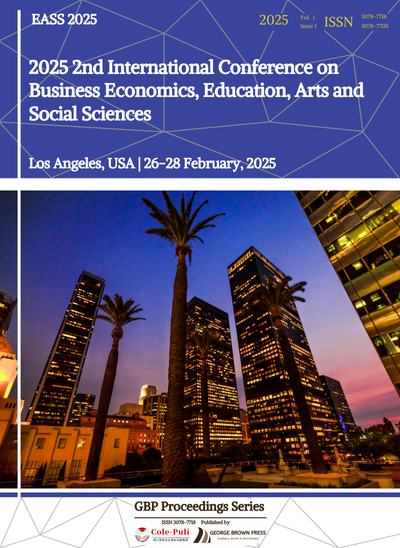Wisdom "Nurturing" Childhood, Shaping the Future: Effectiveness and Insights of the Intelligent Child Care Model in Hangzhou Based on Implicit Interaction Theory
DOI:
https://doi.org/10.71222/37ye6221Keywords:
implicit interaction theory, intelligent child care, infants and toddlers, service modelAbstract
Accelerating the development of a childcare service system for infants and toddlers aged 0-3 years to meet the growing demand for diverse services is not only crucial for the implementation of macro population policies but also essential for addressing gaps in people's livelihoods and alleviating the challenges currently faced by infant and toddler childcare. In the era of rapid information technology development, information technology-enabled childcare models offer new opportunities. This study adopts a mixed research methodology to describe the current status of quality services within the smart childcare model in Hangzhou from three perspectives: model development, service perception, and service content. It also evaluates the effectiveness of this model. Finally, drawing on implicit interaction theory and current trends, the study summarizes and promotes key experiences and insights, offering valuable lessons for research in other regions.
References
1. H. Liang, et al., "Equity in maternal‐and infant‐care services in China: A trend analysis based on residence and area (2000‐2014)," Int. J. Health Plann. Manage., vol. 32, no. 3, pp. 372-383, 2017, doi: 10.1002/hpm.2438.
2. A. Prathyanga, P. Shyaminda, P. Chamikara, S. Lakshan, S. Thelijjagoda, and D. Kasthurirathna, "Intelligent Daycare: En-hancing Child Safety with IoT and Machine Learning Innovations," 2024 9th International Conference on Communication and Electronics Systems (ICCES), Coimbatore, India, 2024, pp. 530-538, doi: 10.1109/ICCES63552.2024.10859472.
3. S. Wang, X. Zhu, F. Bu, and G. Zhang, G., "The responsibility and action of corporations for the development of 0-3 years old children’s childcare services in China," Labor Hist., vol. 65, no. 6, pp. 835-853, 2024, doi: 10.1080/0023656X.2024.2338494.
4. C. Liu, M. N. A. Rahman, X. Wang, and Y. Mao, "Parental demands for childcare services of infants and toddlers in China under the three-child policy," Child Care Pract., vol. 2022, pp. 1-25, Sep. 2022, doi: 10.1080/13575279.2022.2109596.
5. H. Zhao, P. Zhao, and Y. Wang, "Attitude of nursing students towards Internet-based nursing service for the aged," Int. J. Nurs. Sci., vol. 9, no. 1, pp. 114–119, 2022, doi: 10.1016/j.ijnss.2021.12.013.
6. F. Tian, Z. Peng, Y. Mi, et al., "Development and validation of a rating scale for barriers to and facilitators of nurses' participa-tion intentions in 'Internet + Nursing Service'," BMC Nurs., vol. 23, p. 559, 2024, doi: 10.1186/s12912-024-02215-1.
7. J. Chen, K. Li, K. Li, et al., "Dynamic planning of bicycle stations in dockless public bicycle-sharing system using gated graph neural network," ACM Trans. Intell. Syst. Technol., vol. 12, no. 2, pp. 1–22, 2021, doi: 10.1145/3446342.










